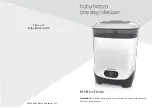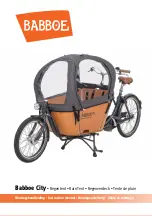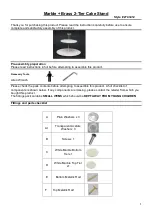
24
9. Disposal and recycling
9.1. General information
Always discharge the battery before disposal. Use electrical tape or other approved covering
over the battery connection points to prevent short circuits.
Battery recycling is encouraged. Dispose of the battery in accordance with local, state and
federal laws and regulations. Batteries may be returned to the manufacturer.
USA & Canada:
Lithium Iron Phosphate batteries are subject to disposal and recycling regulations that vary
by country and region. Always check and follow your applicable regulations before disposing
of any battery. Contact Rechargeable Battery Recycling Corporation (www.rbrc.org) for
U.S.A. and Canada, or your local battery recycling organization.
EC
Waste must be disposed of in accordance with relevant EC Directives and national, regional
and local environmental control regulations. For disposal within the EC, the appropriate code
according to the European Waste Catalogue (EWC) should be used.
Other
Many countries prohibit the disposal of waste electronic equipment in standard waste
receptacles.
10. Troubleshooting
Problem
Possible situation
Solution
The battery cannot
be discharged.
Battery is not installed properly.
Check the installation of the battery.
The cells within the battery are
damaged or the battery is worn out.
Consult support Super B.
The battery cannot
be charged.
Battery is not installed properly.
Check the installation of the battery.
The cells within the battery are
damaged or the battery is worn out.
Consult support Super B.
The capacity of
the battery has
decreased.
The cells within the battery are
damaged or the battery is worn out.
Consult support Super B.
Table 16. Troubleshooting






































